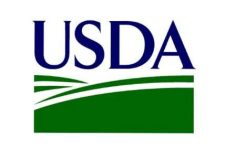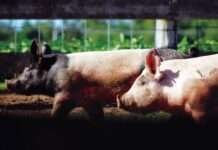Biden Administration Considers Changes to Bolster Effectiveness of Program and Recommits to Making CRP a Cornerstone of Conservation Programming
WASHINGTON, Feb. 5, 2021 – The U.S. Department of Agriculture (USDA) is extending the Conservation Reserve Program (CRP) General Signup period, which had previously been announced as ending on Feb. 12, 2021. USDA will continue to accept offers as it takes this opportunity for the incoming Administration to evaluate ways to increase enrollment. Under the previous Administration, incentives and rental payment rates were reduced resulting in an enrollment shortfall of over 4 million acres. The program, administered by USDA’s Farm Service Agency (FSA), provides annual rental payments for 10 to 15 years for land devoted to conservation purposes, as well as other types of payments.
Before the General CRP signup period ends, producers will have the opportunity to adjust or resubmit their offers to take advantage of planned improvements to the program.
“The Conservation Reserve Program provides a tremendous opportunity to address climate change both by retiring marginal cropland and by restoring grasslands, wetlands, and forests,” said Robert Bonnie, Deputy Chief of Staff, Office of the Secretary. “CRP has a 35-year track record of success beyond just climate benefits, by providing income to producers, improving water quality, reducing erosion, and supporting wildlife habitat and the hunting and fishing opportunities that go along with it. By extending this signup period, we’ll have time to evaluate and implement changes to get this neglected program back on track.”
As one of the largest private-lands conservation programs in the United States, CRP provides both economic and conservation benefits by taking land out of agricultural production. Program successes include:
• Sequestering in soils and plants over 12 million metric tons of carbon dioxide equivalent (CO2e), or about the same amount that the entire state of Delaware emits annually.
• Preventing more than 2 billion tons of soil from being blown away by wind erosion over the life of currently enrolled acres.
• Reducing phosphorous reaching streams by almost 85 million pounds, nitrogen by nearly 450 million pounds, and sediment by over 160 million tons in 2020 alone.
• Creating more than 2.3 million acres of restored wetlands while protecting more than 177,000 stream miles with riparian forest and grass buffers, enough to go around the world seven times.
• Establishing over a half million acres of dedicated pollinator habitat and nearly 15 million more acres of diverse plantings that provide forage for pollinators.
• Increasing populations of ducks and other game birds, prairie chickens, and such grassland songbirds as Baird’s Sparrow. CRP in the Northern Great Plains supports an estimated 8.6% of the grassland bird population.
• Increasing habitat that supports economic opportunities, such as job creation, related to hunting and fishing activities.
This signup for CRP gives producers an opportunity to enroll land for the first time or re-enroll land under existing contracts that will be expiring Sept. 30, 2021. All interested producers, including those on Indian reservations and with trust lands, are encouraged to contact their local USDA Service Center for more information.
All USDA Service Centers are open for business, including those that restrict in-person visits or require appointments. All Service Center visitors wishing to conduct business with FSA, Natural Resources Conservation Service, or any other Service Center agency should call ahead and schedule an appointment. Service Centers that are open for appointments will pre-screen visitors based on health concerns or recent travel, and visitors must adhere to social distancing guidelines. Visitors are also required to wear a face covering during their appointment. Our program delivery staff will continue to work with our producers by phone, email, and using online tools. More information can be found at farmers.gov/coronavirus.





